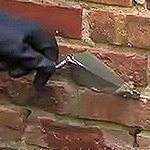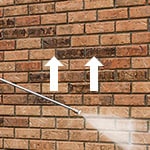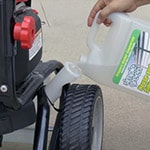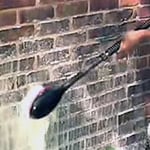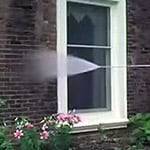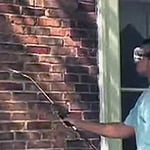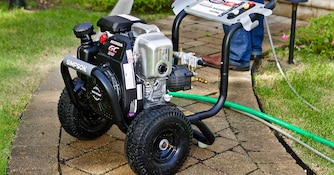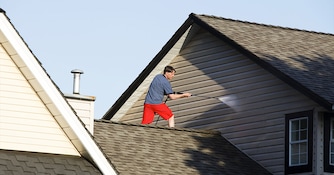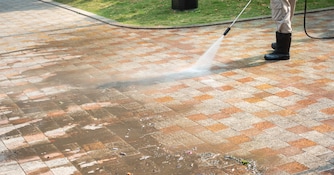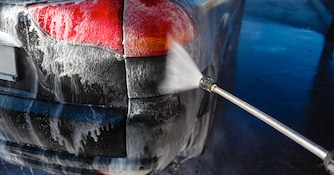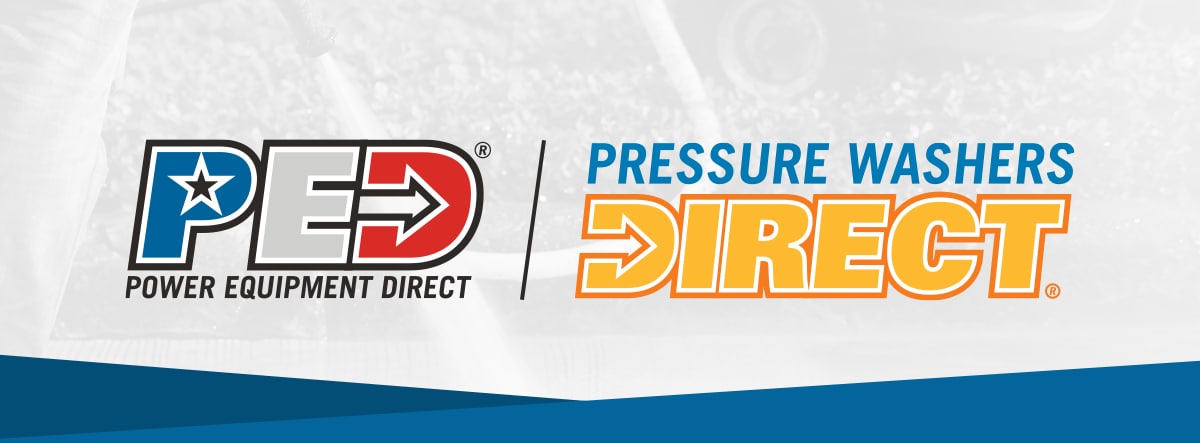
{"storeInfo":{"id":6,"name":"Pressure Washers Direct","domain":"pressurewashersdirect.com","initials":"PWD","url":"https:\/\/www.pressurewashersdirect.com","path":"\/var\/www\/vhosts\/pwd.com\/"},"headerNavJSON":"{\"MainLinks\":[{\"URL\":\"\\\/power\\\/pressure-washers.html\",\"displayText\":\"All Pressure Washers\",\"sectionLinks\":{\"columns\":\"6\",\"linkItems\":[{\"URL\":\"\\\/power\\\/pressure-washers.html\",\"imageURL\":\"\\\/nav-image\\\/100\\\/Simpson ms60773_193ca50be4ad6d257e9db8a5e93508df.jpg\",\"displayText\":\"Shop All\"},{\"URL\":\"\\\/power\\\/wall-mount-electric-pressure-washers.html\",\"imageURL\":\"\\\/nav-image\\\/100\\\/BE 93232-1_94601980917e401d85e349de5622aaf0.png\",\"displayText\":\"Wall Mount\"},{\"URL\":\"\\\/power\\\/portable-pressure-washers.html\",\"imageURL\":\"\\\/nav-image\\\/100\\\/Website Portable Paint Sprayers-1_3ffd0f1e5dbe8ac8e452cadd140a82e0.png\",\"displayText\":\"Portable\"},{\"URL\":\"\\\/power\\\/residential-pressure-washers.html\",\"imageURL\":\"\\\/nav-image\\\/100\\\/BE BE317RA-1_39d43232c6be7fb8ac71707b9cce5847.png\",\"displayText\":\"Homeowner\"},{\"URL\":\"\\\/power\\\/semi-pro-pressure-washers.html\",\"imageURL\":\"\\\/nav-image\\\/100\\\/Simpson alh4240_4b557496f191edfe36943ad7fdb2b5c8.jpg\",\"displayText\":\"Semi-Pro\"},{\"URL\":\"\\\/power\\\/commercial-pressure-washers.html\",\"imageURL\":\"\\\/nav-image\\\/100\\\/PPS2533HCI_8e0704db9bd1cb372a33189c2e35b80c.jpg\",\"displayText\":\"Commercial\"}]},\"subCategories\":[{\"URL\":\"\\\/power\\\/pressure-washers.html\",\"type\":\"list\",\"title\":\"Shop by Temperature\",\"linkItems\":[{\"URL\":\"\\\/power\\\/cold-water-pressure-washers.html\",\"displayText\":\"Cold Water\"},{\"URL\":\"\\\/power\\\/warm-water-pressure-washers.html\",\"displayText\":\"Warm Water\"},{\"URL\":\"\\\/power\\\/hot-water-pressure-washers.html\",\"displayText\":\"Hot Water\"}]},{\"URL\":\"\\\/power\\\/shop-by-psi.html\",\"type\":\"list\",\"title\":\"Shop by PSI\",\"linkItems\":[{\"URL\":\"\\\/power\\\/60-psi-2500-psi.html\",\"displayText\":\"60-2500 PSI\"},{\"URL\":\"\\\/power\\\/2501-psi-3000-psi.html\",\"displayText\":\"2501-3000 PSI\"},{\"URL\":\"\\\/power\\\/3001-psi-3500-psi.html\",\"displayText\":\"3001-3500 PSI\"},{\"URL\":\"\\\/power\\\/3501-psi-4000-psi.html\",\"displayText\":\"3501-4000 PSI\"},{\"URL\":\"\\\/power\\\/4000-psi-up.html\",\"displayText\":\"4001+ PSI\"}]},{\"URL\":\"\\\/shopbybrand.php\",\"type\":\"list\",\"title\":\"Shop by Brands\",\"linkItems\":[{\"URL\":\"\\\/power\\\/simpson-pressure-washers.html\",\"displayText\":\"Simpson\"},{\"URL\":\"\\\/power\\\/generac-pressure-washers.html\",\"displayText\":\"Generac\"},{\"URL\":\"\\\/power\\\/dewalt-pressure-washers.html\",\"displayText\":\"DEWALT\"},{\"URL\":\"\\\/power\\\/ar-pressure-washers.html\",\"displayText\":\"AR Blue Clean\"},{\"URL\":\"\\\/power\\\/be-pressure-washers.html\",\"displayText\":\"BE\"}]},{\"URL\":\"\\\/stories\\\/343-How-to-Pick-the-Perfect-Pressure-Washer.html\",\"type\":\"image\",\"title\":\"Buyer's Guide\",\"imageURL\":\"\\\/nav-article-image\\\/305\\\/social_img_343.jpg\",\"linkItems\":[],\"displayText\":\"Pressure Washer Buyer's Guide\"}]},{\"URL\":\"\\\/power\\\/gas-pressure-washers.html\",\"displayText\":\"Gas Pressure Washers\",\"sectionLinks\":{\"columns\":\"6\",\"linkItems\":[{\"URL\":\"\\\/power\\\/gas-pressure-washers.html\",\"imageURL\":\"\\\/nav-image\\\/100\\\/gas-6-1.jpg\",\"displayText\":\"All Gas\"},{\"URL\":\"\\\/power\\\/california-approved-pressure-washers.html\",\"imageURL\":\"\\\/nav-image\\\/100\\\/Simpson alh4240_4b557496f191edfe36943ad7fdb2b5c8.jpg\",\"displayText\":\"2024 California Approved\"},{\"URL\":\"\\\/power\\\/carb-compliant-pressure-washers.html\",\"imageURL\":\"\\\/nav-image\\\/100\\\/Cold_Water_PWD_719b47a34b3d3ee89b3946ac048251ba.jpg\",\"displayText\":\"Low Emissions\"},{\"URL\":\"\\\/power\\\/gas-carted-pressure-washers.html\",\"imageURL\":\"\\\/nav-image\\\/100\\\/Hot_Water_PWD_1c251eaeb9dd74f128f3e0ce9e9bb815.jpg\",\"displayText\":\"Carted\"},{\"URL\":\"\\\/power\\\/gas-skid-pressure-washers.html\",\"imageURL\":\"\\\/nav-image\\\/100\\\/6115PRO_61f870db2032856032e4b6f83acce535.jpg\",\"displayText\":\"All Skids\"},{\"URL\":\"\\\/power\\\/gas-pressure-washers-under-1000.html\",\"imageURL\":\"\\\/nav-image\\\/100\\\/PPS2533HCI_8e0704db9bd1cb372a33189c2e35b80c.jpg\",\"displayText\":\"Under $1,000\"}]},\"subCategories\":[{\"URL\":\"\\\/power\\\/gas-pressure-washers.html\",\"type\":\"list\",\"title\":\"Shop by Temperature\",\"linkItems\":[{\"URL\":\"\\\/power\\\/gas-cold-water-pressure-washers.html\",\"displayText\":\"Cold Water\"},{\"URL\":\"\\\/power\\\/warm-water-gas-pressure-washers.html\",\"displayText\":\"Warm Water\"},{\"URL\":\"\\\/power\\\/gas-hot-water-pressure-washers.html\",\"displayText\":\"Hot Water\"}]},{\"URL\":\"\\\/power\\\/gas-pressure-washers.html\",\"type\":\"list\",\"title\":\"Shop by Engine\",\"linkItems\":[{\"URL\":\"\\\/power\\\/honda-gas-engine-pressure-washers.html\",\"displayText\":\"Honda\"},{\"URL\":\"\\\/power\\\/vanguard-gas-engine-pressure-washers.html\",\"displayText\":\"Vanguard\"},{\"URL\":\"\\\/power\\\/kohler-gas-engine-pressure-washers.html\",\"displayText\":\"Kohler\"},{\"URL\":\"\\\/power\\\/powerease-gas-engine-pressure-washers.html\",\"displayText\":\"Powerease\"},{\"URL\":\"\\\/power\\\/lifan-gas-engine-pressure-washers.html\",\"displayText\":\"Lifan\"}]},{\"URL\":\"\\\/shopbybrand.php\",\"type\":\"list\",\"title\":\"Shop by Brand\",\"linkItems\":[{\"URL\":\"\\\/power\\\/simpson-gas-pressure-washers.html\",\"displayText\":\"Simpson\"},{\"URL\":\"\\\/power\\\/be-gas-pressure-washers.html\",\"displayText\":\"BE\"},{\"URL\":\"\\\/power\\\/pressure-pro-gas-pressure-washers.html\",\"displayText\":\"Pressure Pro\"},{\"URL\":\"\\\/power\\\/dirt-killer-gas-pressure-washers.html\",\"displayText\":\"Dirt Killer\"},{\"URL\":\"\\\/power\\\/easy-kleen-gas-pressure-washers.html\",\"displayText\":\"Easy-Kleen\"},{\"URL\":\"\\\/power\\\/mi-t-m-gas-pressure-washers.html\",\"displayText\":\"Mi-T-M\"}]}]},{\"URL\":\"\\\/power\\\/electric-pressure-washers.html\",\"displayText\":\"Electric Pressure Washers\",\"sectionLinks\":{\"columns\":\"6\",\"linkItems\":[{\"URL\":\"\\\/power\\\/electric-pressure-washers.html\",\"imageURL\":\"\\\/nav-image\\\/100\\\/BE 93232-1_94601980917e401d85e349de5622aaf0.png\",\"displayText\":\"All Electrics\"},{\"URL\":\"\\\/power\\\/consumer-electric-pressure-washers.html\",\"imageURL\":\"\\\/nav-image\\\/100\\\/K2CCK_65003_600_79f1be6003b016b5b19a99eaad22c206.jpg\",\"displayText\":\"Homeowner\"},{\"URL\":\"\\\/power\\\/commercial-electric-pressure-washers.html\",\"imageURL\":\"\\\/nav-image\\\/100\\\/Pmax PP VB8035HGEA306-1_15b03f8e4f05b2a7f8f6961704526843.png\",\"displayText\":\"Commercial\"},{\"URL\":\"\\\/power\\\/portable-electric-pressure-washers.html\",\"imageURL\":\"\\\/nav-image\\\/100\\\/BE BE317RA-1_39d43232c6be7fb8ac71707b9cce5847.png\",\"displayText\":\"Portable\"},{\"URL\":\"\\\/power\\\/wall-mount-electric-pressure-washers.html\",\"imageURL\":\"\\\/nav-image\\\/100\\\/Pmax Mi-T-M (6)_3433fa4a6c0f0352235e3a4a386ab114.jpeg\",\"displayText\":\"Wall Mount\"},{\"URL\":\"\\\/power\\\/stationary-electric-pressure-washers.html\",\"imageURL\":\"\\\/nav-image\\\/100\\\/EZP5005-3_70826_600_058c2fb2646a7e8b54f9dfe76873c405.jpg\",\"displayText\":\"Stationary\"}]},\"subCategories\":[{\"URL\":\"\\\/power\\\/electric-pressure-washers.html\",\"type\":\"list\",\"title\":\"Shop by Temperature\",\"linkItems\":[{\"URL\":\"\\\/power\\\/electric-cold-water-pressure-washers.html\",\"displayText\":\"Cold Water\"},{\"URL\":\"\\\/power\\\/electric-warm-water-pressure-washers.html\",\"displayText\":\"Warm Water\"},{\"URL\":\"\\\/power\\\/electric-hot-water-pressure-washers.html\",\"displayText\":\"Hot Water\"}]},{\"URL\":\"\\\/power\\\/electric-pressure-washers.html\",\"type\":\"list\",\"title\":\"1 Phase\",\"linkItems\":[{\"URL\":\"\\\/power\\\/120-volt-15-amp-electric-pressure-washers-standard-plug.html\",\"displayText\":\"120V - 15 Amp Standard Plug\"},{\"URL\":\"\\\/power\\\/120-volt-20-amp-electric-pressure-washers.html\",\"displayText\":\"120V - 20 Amp\"},{\"URL\":\"\\\/power\\\/208-volt-1-phase-electric-pressure-washers.html\",\"displayText\":\"208V\"},{\"URL\":\"\\\/power\\\/220-230-240-volt-1-phase-electric-pressure-washers.html\",\"displayText\":\"220V \\\/ 230V \\\/ 240V\"}]},{\"URL\":\"\\\/power\\\/electric-pressure-washers.html\",\"type\":\"list\",\"title\":\"Special Features\",\"linkItems\":[{\"URL\":\"\\\/power\\\/electric-soft-wash-pressure-washers.html\",\"displayText\":\"Soft Wash\"},{\"URL\":\"\\\/power\\\/sanitizing-pressure-washers.html\",\"displayText\":\"Sanitizer Units\"},{\"URL\":\"\\\/power\\\/battery-powered-pressure-washers.html\",\"displayText\":\"Battery Powered\"},{\"URL\":\"\\\/power\\\/solar-powered-pressure-washers.html\",\"displayText\":\"Solar Powered\"},{\"URL\":\"\\\/power\\\/automatic-stop-start-pressure-washers.html\",\"displayText\":\"Auto Stop\\\/Start\"}]},{\"URL\":\"\\\/power\\\/electric-pressure-washers.html\",\"type\":\"list\",\"title\":\"3 Phase\",\"linkItems\":[{\"URL\":\"\\\/power\\\/208-volt-3-phase-electric-pressure-washers.html\",\"displayText\":\"208V\"},{\"URL\":\"\\\/power\\\/230-240-volt-3-phase-electric-pressure-washers.html\",\"displayText\":\"230V \\\/ 240V\"},{\"URL\":\"\\\/power\\\/440-460-480-volt-3-phase-electric-pressure-washers.html\",\"displayText\":\"440V \\\/ 460V \\\/ 480V\"}]}]},{\"URL\":\"\\\/power\\\/commercial-pressure-washers.html\",\"displayText\":\"Commercial Pressure Washers\",\"sectionLinks\":{\"columns\":\"6\",\"linkItems\":[{\"URL\":\"\\\/power\\\/commercial-portable-pressure-washers.html\",\"imageURL\":\"\\\/nav-image\\\/100\\\/commercial-6-1.jpg\",\"displayText\":\"Portable\"},{\"URL\":\"\\\/power\\\/commercial-trailer-pressure-washers.html\",\"imageURL\":\"\\\/nav-image\\\/100\\\/commercial-6-3.jpg\",\"displayText\":\"Trailers\"},{\"URL\":\"\\\/power\\\/commercial-roll-cage-pressure-washers.html\",\"imageURL\":\"\\\/nav-image\\\/100\\\/pwd-commercial-portable-roll-cage_a8cc9e43a57d6cd7d95b36b35c37bfda.jpg\",\"displayText\":\"Roll Cage\"},{\"URL\":\"\\\/power\\\/commercial-wall-mount-pressure-washers.html\",\"imageURL\":\"\\\/nav-image\\\/100\\\/commercial-6-2.jpg\",\"displayText\":\"Wall Mount\"},{\"URL\":\"\\\/power\\\/commercial-stationary-pressure-washers.html\",\"imageURL\":\"\\\/nav-image\\\/100\\\/Website delco-1_1ba7ebfe745d2948e5f1e7cdd49dee39.jpg\",\"displayText\":\"Stationary\"},{\"URL\":\"\\\/power\\\/commercial-hot-water-pressure-washers.html\",\"imageURL\":\"\\\/nav-image\\\/100\\\/Website Hot Water Commercial-1_ac37da9b04534106c2a9534b67737bcc.png\",\"displayText\":\"Hot Water\"}]},\"subCategories\":[{\"URL\":\"\\\/power\\\/commercial-pressure-washers.html\",\"type\":\"list\",\"title\":\"Popular Brands\",\"linkItems\":[{\"URL\":\"\\\/power\\\/mi-t-m-pressure-washers.html\",\"displayText\":\"Mi-T-M\"},{\"URL\":\"\\\/power\\\/easy-kleen-commercial-pressure-washers.html\",\"displayText\":\"Easy-Kleen\"},{\"URL\":\"\\\/power\\\/delco-pressure-washer.html\",\"displayText\":\"Delco\"},{\"URL\":\"\\\/power\\\/simpson-professional-pressure-washers.html\",\"displayText\":\"Simpson\"},{\"URL\":\"\\\/power\\\/pressure-pro-commercial-pressure-washers.html\",\"displayText\":\"Pressure-Pro\"}]},{\"URL\":\"\\\/power\\\/commercial-pressure-washers.html\",\"type\":\"list\",\"title\":\"Shop by Fuel Type\",\"linkItems\":[{\"URL\":\"\\\/power\\\/commercial-electric-pressure-washers.html\",\"displayText\":\"Electric\"},{\"URL\":\"\\\/power\\\/commercial-gas-pressure-washers.html\",\"displayText\":\"Gas\"},{\"URL\":\"\\\/power\\\/commercial-natural-gas-pressure-washers.html\",\"displayText\":\"Natural Gas\"}]},{\"URL\":\"\\\/power\\\/commercial-pressure-washers.html\",\"type\":\"list\",\"title\":\"Shop by PSI\",\"linkItems\":[{\"URL\":\"\\\/power\\\/2000-2699-psi-commercial-pressure-washers.html\",\"displayText\":\"2000-2699 PSI\"},{\"URL\":\"\\\/power\\\/2700-3399-psi-commercial-pressure-washers.html\",\"displayText\":\"2700-3399 PSI\"},{\"URL\":\"\\\/power\\\/3400-4099-psi-commercial-pressure-washers.html\",\"displayText\":\"3400-4099 PSI\"},{\"URL\":\"\\\/power\\\/4100-4799-psi-commercial-pressure-washers.html\",\"displayText\":\"4100-4799 PSI\"},{\"URL\":\"\\\/power\\\/5500-6199-psi-commercial-pressure-washers.html\",\"displayText\":\"5500-6199 PSI\"}]},{\"URL\":\"\\\/stories\\\/355-How-to-Pick-the-Perfect-Professional-Power-Washer.html\",\"type\":\"image\",\"title\":\"Buyer's Guide\",\"imageURL\":\"\\\/nav-article-image\\\/305\\\/social_img_355.jpg\",\"linkItems\":[],\"displayText\":\"How to Pick the Perfect Professional Power Washer.\"}]},{\"URL\":\"\\\/power\\\/pressure-washer-kits.html\",\"displayText\":\"Pressure Washer Kits\",\"sectionLinks\":{\"columns\":\"6\",\"linkItems\":[{\"URL\":\"\\\/power\\\/pressure-washer-kits.html\",\"imageURL\":\"\\\/nav-image\\\/100\\\/Pmax BE-P1515EPNW-DF-1_608ee89dd462bfecb404827d3194c3e4.png\",\"displayText\":\"All Kits\"},{\"URL\":\"\\\/power\\\/consumer-pressure-washer-kits.html\",\"imageURL\":\"\\\/nav-image\\\/100\\\/Nav consumer kit_76aaa54cf80c6b002cea0519e08a1124.jpeg\",\"displayText\":\"Consumer Kits\"},{\"URL\":\"\\\/power\\\/consumer-pressure-washer-kits-with-surface-cleaners.html\",\"imageURL\":\"\\\/nav-image\\\/100\\\/Nav consumer kit w surface_83de9da1becd1dd0349576c5f6c26374.jpeg\",\"displayText\":\"Comsumer Kits w\\\/ Surface Cleaners\"},{\"URL\":\"\\\/power\\\/commercial-start-your-own-business-kits.html\",\"imageURL\":\"\\\/nav-image\\\/100\\\/Website DIY Kits-1_be40214211295b26e0c3b46349b0a0c6.png\",\"displayText\":\"Start Your Own Business\"},{\"URL\":\"\\\/power\\\/start-your-own-business-kit-with-surface-cleaners.html\",\"imageURL\":\"\\\/nav-image\\\/100\\\/Nav consumer kit w surface (1)_60f3b5652721aefe11b6f671433f78b2.jpeg\",\"displayText\":\"Start Your Own Business Kit w\\\/ Surface Cleaner\"},{\"URL\":\"\\\/power\\\/start-your-own-business-kit-without-surface-cleaners.html\",\"imageURL\":\"\\\/nav-image\\\/100\\\/Website electric Kits-1_77a2489b5c9451dca4898a83583c5efe.png\",\"displayText\":\"Start Your Own Business Kit w\\\/o Surface Cleaner\"}]},\"subCategories\":[{\"URL\":\"\\\/power\\\/pressure-washer-kits.html\",\"type\":\"list\",\"title\":\"Shop by Brand\",\"linkItems\":[{\"URL\":\"\\\/power\\\/simpson-start-your-own-business-kits.html\",\"displayText\":\"Simpson\"},{\"URL\":\"\\\/power\\\/karcher-start-your-own-business-kits.html\",\"displayText\":\"Karcher\"},{\"URL\":\"\\\/power\\\/be-pressure-washer-kits.html\",\"displayText\":\"BE\"},{\"URL\":\"\\\/power\\\/pressure-pro-start-your-own-business-kits.html\",\"displayText\":\"Pressure-Pro\"},{\"URL\":\"\\\/power\\\/kranzle-start-your-own-business-kits.html\",\"displayText\":\"Kranzle\"}]},{\"URL\":\"\\\/power\\\/pressure-washer-kits.html\",\"type\":\"list\",\"title\":\"Shop by Engine\",\"linkItems\":[{\"URL\":\"\\\/power\\\/honda-powered-kits.html\",\"displayText\":\"Honda\"},{\"URL\":\"\\\/power\\\/kohler-powered-kits.html\",\"displayText\":\"Kohler\"},{\"URL\":\"\\\/power\\\/powerease-powered-kits.html\",\"displayText\":\"Powerease\"}]},{\"URL\":\"\\\/power\\\/pressure-washer-kits.html\",\"type\":\"list\",\"title\":\"Recommendations\",\"linkItems\":[{\"URL\":\"\\\/power\\\/manufacturers-favorite-kits.html\",\"displayText\":\"Manufacturer's Favorites\"},{\"URL\":\"\\\/power\\\/pwd-exclusive.html\",\"displayText\":\"PWD Exclusive\"},{\"URL\":\"\\\/power\\\/electric-pressure-washer-kits.html\",\"displayText\":\"Electric Kits\"},{\"URL\":\"\\\/power\\\/gas-pressure-washer-business-kits.html\",\"displayText\":\"Gas Units\"},{\"URL\":\"\\\/power\\\/newly-added-business-kits.html\",\"displayText\":\"Newly Added\"}]},{\"URL\":\"\\\/stories\\\/208-How-To-Start-Or-Expand-Your-Business.html\",\"type\":\"image\",\"title\":\"Buyer's Guide\",\"imageURL\":\"\\\/nav-article-image\\\/305\\\/social_img_208_09a99048bd9e5d6209c1452c5549b27b.jpg\",\"linkItems\":[],\"displayText\":\"Pressure Washer Business Start Up Kits\"}]},{\"URL\":\"\\\/power\\\/pressure-washer-hoses.html\",\"displayText\":\"Pressure Washer Hoses\",\"sectionLinks\":{\"columns\":\"6\",\"linkItems\":[{\"URL\":\"\\\/power\\\/pressure-washer-hoses.html\",\"imageURL\":\"\\\/nav-image\\\/100\\\/D3003_pigtail_500_5842298927f925a1c5b760d33a98cd23.jpg\",\"displayText\":\"All Hoses\"},{\"URL\":\"\\\/power\\\/hot-water-pressure-washer-hoses.html\",\"imageURL\":\"\\\/nav-image\\\/100\\\/hoses-6-2.jpg\",\"displayText\":\"Hot Water Hoses\"},{\"URL\":\"\\\/power\\\/jumper-hoses.html\",\"imageURL\":\"\\\/nav-image\\\/100\\\/hoses-6-3.jpg\",\"displayText\":\"Jumper Hoses\"},{\"URL\":\"\\\/power\\\/non-marking-pressure-washer-hoses.html\",\"imageURL\":\"\\\/nav-image\\\/100\\\/hoses-6-1.jpg\",\"displayText\":\"Non-Marking\"}]},\"subCategories\":[{\"URL\":\"\\\/power\\\/pressure-washer-hoses.html\",\"type\":\"list\",\"title\":\"Hose Accessories\",\"linkItems\":[{\"URL\":\"\\\/power\\\/hose-reels.html\",\"displayText\":\"Hose Reels\"},{\"URL\":\"\\\/power\\\/water-pumping-kits.html\",\"displayText\":\"Pumping Kits\"},{\"URL\":\"\\\/power\\\/pressure-washer-hose-quick-connect-kits.html\",\"displayText\":\"Quick Connect\"},{\"URL\":\"\\\/power\\\/pressure-washer-water-filter-kits.html\",\"displayText\":\"Water Filter Kits\"}]},{\"URL\":\"\\\/power\\\/pressure-washer-hoses.html\",\"type\":\"list\",\"title\":\"Shop by PSI\",\"linkItems\":[{\"URL\":\"\\\/power\\\/2000-2699-psi-pressure-washer-hoses.html\",\"displayText\":\"2000-2699 PSI\"},{\"URL\":\"\\\/power\\\/2700-3399-psi-pressure-washer-hoses.html\",\"displayText\":\"2700-3399 PSI\"},{\"URL\":\"\\\/power\\\/3400-4099-psi-pressure-washer-hoses.html\",\"displayText\":\"3400-4099 PSI\"},{\"URL\":\"\\\/power\\\/4100-4799-psi-pressure-washer-hoses.html\",\"displayText\":\"4100-4799 PSI\"},{\"URL\":\"\\\/power\\\/5500-6199-psi-pressure-washer-hoses.html\",\"displayText\":\"5500-6199 PSI\"}]},{\"URL\":\"\\\/power\\\/pressure-washer-hoses.html\",\"type\":\"list\",\"title\":\"Shop by Length\",\"linkItems\":[{\"URL\":\"\\\/power\\\/25-50-foot-pressure-washer-hoses.html\",\"displayText\":\"25-50 Feet\"},{\"URL\":\"\\\/power\\\/100-199-foot-pressure-washer-hoses.html\",\"displayText\":\"100-199 Feet\"},{\"URL\":\"\\\/power\\\/200-plus-foot-pressure-washer-hoses.html\",\"displayText\":\"200+ Feet\"}]},{\"URL\":\"\\\/stories\\\/178-How-to-Pick-the-Perfect-Replacement-Hose.html\",\"type\":\"image\",\"title\":\"Buyer's Guide\",\"imageURL\":\"\\\/nav-article-image\\\/305\\\/social_img_178_9cae69f554734614b3447f50b72c0d6a.jpg\",\"linkItems\":[],\"displayText\":\"Pressure Washer Hose Buyer's Guide\"}]},{\"URL\":\"\\\/power\\\/pressure-washer-pumps.html\",\"displayText\":\"Pressure Washer Pumps\",\"sectionLinks\":{\"columns\":\"6\",\"linkItems\":[{\"URL\":\"\\\/power\\\/axial-cam-pumps.html\",\"imageURL\":\"\\\/nav-image\\\/100\\\/pumps-6-1.jpg\",\"displayText\":\"Axial\"},{\"URL\":\"\\\/power\\\/triplex-pressure-washer-pumps.html\",\"imageURL\":\"\\\/nav-image\\\/100\\\/pumps-6-2.jpg\",\"displayText\":\"Triplex\"},{\"URL\":\"\\\/power\\\/fully-plumbed-pressure-washer-pumps.html\",\"imageURL\":\"\\\/nav-image\\\/100\\\/pumps-6-3.jpg\",\"displayText\":\"Fully Plumbed\"},{\"URL\":\"\\\/power\\\/belt-drive-pumps.html\",\"imageURL\":\"\\\/nav-image\\\/100\\\/belt_drive_pump_dfee3d3b0f21541095e20107c6975483.jpg\",\"displayText\":\"Belt-Drive\"}]},\"subCategories\":[{\"URL\":\"\\\/power\\\/pressure-washer-pumps.html\",\"type\":\"list\",\"title\":\"Popular Brands\",\"linkItems\":[{\"URL\":\"\\\/power\\\/aaa-pressure-washer-pumps.html\",\"displayText\":\"AAA\"},{\"URL\":\"\\\/power\\\/ar-pumps.html\",\"displayText\":\"AR\"},{\"URL\":\"\\\/power\\\/be-pressure-washer-pumps.html\",\"displayText\":\"BE\"},{\"URL\":\"\\\/power\\\/cat-pressure-washer-pumps.html\",\"displayText\":\"CAT\"},{\"URL\":\"\\\/power\\\/general-pressure-washer-pumps.html\",\"displayText\":\"GP\"}]},{\"URL\":\"\\\/power\\\/pressure-washer-pumps.html\",\"type\":\"list\",\"title\":\"Pump Accessories\",\"linkItems\":[{\"URL\":\"\\\/power\\\/pressure-washer-pump-oil.html\",\"displayText\":\"Pump Oil\"},{\"URL\":\"\\\/power\\\/pressure-washer-pump-saver.html\",\"displayText\":\"Pump Saver\"},{\"URL\":\"\\\/power\\\/pressure-washer-pump-unloaders.html\",\"displayText\":\"Unloader\"},{\"URL\":\"\\\/power\\\/chemical-injectors.html\",\"displayText\":\"Chemical Injectors\"}]},{\"URL\":\"\\\/power\\\/pressure-washer-pumps.html\",\"type\":\"list\",\"title\":\"Shop by PSI\",\"linkItems\":[{\"URL\":\"\\\/power\\\/2400-2600-psi-pressure-washer-pumps.html\",\"displayText\":\"2400-2600 PSI\"},{\"URL\":\"\\\/power\\\/2700-3000-psi-pressure-washer-pumps.html\",\"displayText\":\"2700-3000 PSI\"},{\"URL\":\"\\\/power\\\/3100-3500-psi-pressure-washer-pumps.html\",\"displayText\":\"3100-3500 PSI\"},{\"URL\":\"\\\/power\\\/3600-4000-psi-pressure-washer-pumps.html\",\"displayText\":\"3600-4000 PSI\"}]},{\"URL\":\"\\\/stories\\\/209-How-To-Pick-The-Perfect-Replacement-Pressure-Washer-Pump.html\",\"type\":\"image\",\"title\":\"Buyer's Guide\",\"imageURL\":\"\\\/nav-article-image\\\/305\\\/social_img_209.jpg\",\"linkItems\":[],\"displayText\":\"How to Pick a Replacement Pressure Washer Pump\"}]},{\"URL\":\"\\\/power\\\/surface-cleaners.html\",\"displayText\":\"Surface Cleaners\",\"sectionLinks\":{\"columns\":\"6\",\"linkItems\":[{\"URL\":\"\\\/power\\\/consumer-pressure-washer-surface-cleaners.html\",\"imageURL\":\"\\\/nav-image\\\/100\\\/Website consumer-1_8ecd709d8def5c5498fd0e7e35d91f89.jpg\",\"displayText\":\"Consumer Surface Cleaners\"},{\"URL\":\"\\\/\\\/power\\\/professional-pressure-washer-surface-cleaners.html\",\"imageURL\":\"\\\/nav-image\\\/100\\\/Website Commercial Surface Cleaner-1_9015db002afe2224975cdb0d7f4bd637.png\",\"displayText\":\"Commercial Surface Cleaners\"},{\"URL\":\"\\\/power\\\/undercarriage-cleaners.html\",\"imageURL\":\"\\\/nav-image\\\/100\\\/Website no swivel surface cleaner-1 (1)_0b6b2f5fb31047bf01e0f590da9ac978.jpg\",\"displayText\":\"Undercarriage Surface Cleaners\"},{\"URL\":\"\\\/power\\\/no-swivel-surface-cleaners.html\",\"imageURL\":\"\\\/nav-image\\\/100\\\/Website no swivel surface cleaner-1_72d11389c2045efb0adfc82b239da4b5.jpg\",\"displayText\":\"No-Swivel Surface Cleaners\"},{\"URL\":\"\\\/power\\\/swivel-surface-cleaners.html\",\"imageURL\":\"\\\/nav-image\\\/100\\\/Website Swivel Surface Cleaner-1_410e0d0030314a38ff63ab974d7717b0.png\",\"displayText\":\"Swivel Surface Cleaners\"},{\"URL\":\"\\\/power\\\/surface-cleaners.html\",\"imageURL\":\"\\\/nav-image\\\/100\\\/WGF2400_500_167ab891f25cf9e49a5a3f8676bc3f9e.jpg\",\"displayText\":\"All Surface Cleaners\"}]},\"subCategories\":[{\"URL\":\"\\\/power\\\/surface-cleaners.html\",\"type\":\"list\",\"title\":\"Popular Brands\",\"linkItems\":[{\"URL\":\"\\\/power\\\/be-surface-cleaners.html\",\"displayText\":\"BE\"},{\"URL\":\"\\\/power\\\/generac-surface-cleaners.html\",\"displayText\":\"Generac\"},{\"URL\":\"\\\/power\\\/general-pump-surface-clean-up.html\",\"displayText\":\"General Pump\"},{\"URL\":\"\\\/power\\\/mosmatic-surface-cleaners.html\",\"displayText\":\"Mosmatic\"},{\"URL\":\"\\\/power\\\/pressure-pro-surface-cleaners.html\",\"displayText\":\"Pressure Pro\"}]},{\"URL\":\"\\\/power\\\/surface-cleaners.html\",\"type\":\"list\",\"title\":\"Shop by PSI\",\"linkItems\":[{\"URL\":\"\\\/power\\\/2000-3199-psi-surface-cleaners.html\",\"displayText\":\"2000-3199 PSI\"},{\"URL\":\"\\\/power\\\/3200-3799-psi-surface-cleaners.html\",\"displayText\":\"3200-3799 PSI\"},{\"URL\":\"\\\/power\\\/3800-4099-psi-surface-cleaners.html\",\"displayText\":\"3800-4099 PSI\"},{\"URL\":\"\\\/power\\\/4400-psi-up-surface-cleaners.html\",\"displayText\":\"4400 PSI & Up\"}]},{\"URL\":\"\\\/power\\\/surface-cleaner-attachments-accessories.html\",\"type\":\"list\",\"title\":\"Attachments & Accessories\",\"linkItems\":[{\"URL\":\"\\\/power\\\/surface-cleaner-attachments-accessories.html\",\"displayText\":\"Shop All Accessories\"},{\"URL\":\"\\\/power\\\/pressure-washer-spray-rollers.html\",\"displayText\":\"Spray Rollers\"},{\"URL\":\"\\\/power\\\/pressure-washer-water-brooms.html\",\"displayText\":\"Water Brooms\"}]}]},{\"URL\":\"\\\/power\\\/pressure-washer-accessories.html\",\"displayText\":\"Pressure Washer Accessories\",\"sectionLinks\":{\"columns\":\"6\",\"linkItems\":[{\"URL\":\"\\\/power\\\/pressure-washer-spray-tips.html\",\"imageURL\":\"\\\/nav-image\\\/100\\\/acc-6-4.jpg\",\"displayText\":\"Spray Tips\"},{\"URL\":\"\\\/power\\\/garden-hose-pressure-washer-adapters.html\",\"imageURL\":\"\\\/nav-image\\\/100\\\/Website hose adapters-1_adda9b32ca91d69172de0cf5be37ad3f.jpg\",\"displayText\":\"Garden Hose Adapters\"},{\"URL\":\"\\\/power\\\/female-end-adapters.html\",\"imageURL\":\"\\\/nav-image\\\/100\\\/Website female adapter-1_c58445b86d453623063c2bb1f25a9b49.jpg\",\"displayText\":\"Female End Adapters\"},{\"URL\":\"\\\/power\\\/male-end-adapters.html\",\"imageURL\":\"\\\/nav-image\\\/100\\\/Website male adapter-1_ebe25fcd78fc820fb84a2c74fac19150.jpg\",\"displayText\":\"Male End Adapters\"},{\"URL\":\"\\\/power\\\/swivel-couplers.html\",\"imageURL\":\"\\\/nav-image\\\/100\\\/Website swivel coupler-1_deab44b21e3515631c64dedbb5e89a68.jpg\",\"displayText\":\"Swivel Couplers\"},{\"URL\":\"\\\/power\\\/quick-connect-kits.html\",\"imageURL\":\"\\\/nav-image\\\/100\\\/Website quick connect-1_61fc9984b52b9b337cb35c864cd001d1.jpg\",\"displayText\":\"Quick Connect Kits\"}]},\"subCategories\":[{\"URL\":\"\\\/power\\\/pressure-washer-accessories.html\",\"type\":\"list\",\"title\":\"Nozzles\",\"linkItems\":[{\"URL\":\"\\\/power\\\/high-pressure-nozzles.html\",\"displayText\":\"High Pressure\"},{\"URL\":\"\\\/power\\\/long-range-nozzles.html\",\"displayText\":\"Long Range\"},{\"URL\":\"\\\/power\\\/multi-functional-nozzles.html\",\"displayText\":\"Multi-Functional\"},{\"URL\":\"\\\/power\\\/pressure-washer-turbo-nozzles.html\",\"displayText\":\"Turbo\"},{\"URL\":\"\\\/power\\\/nozzles-with-qc-filter.html\",\"displayText\":\"With QC Filter\"}]},{\"URL\":\"\\\/power\\\/pressure-washer-accessories.html\",\"type\":\"list\",\"title\":\"Detergents\",\"linkItems\":[{\"URL\":\"\\\/power\\\/pressure-washer-soaps.html\",\"displayText\":\"Soaps\"},{\"URL\":\"\\\/power\\\/pressure-washer-detergent-foamers.html\",\"displayText\":\"Foamers\"},{\"URL\":\"\\\/power\\\/pressure-washer-brushes.html\",\"displayText\":\"Brushes\"},{\"URL\":\"\\\/power\\\/pressure-washer-soap-nozzles.html\",\"displayText\":\"Soap Nozzles\"},{\"URL\":\"\\\/power\\\/chemical-injectors.html\",\"displayText\":\"Chemical Injectors\"}]},{\"URL\":\"\\\/power\\\/pressure-washer-accessories.html\",\"type\":\"list\",\"title\":\"Adaptors & Couplers\",\"linkItems\":[{\"URL\":\"\\\/power\\\/1-4-inch-adaptors.html\",\"displayText\":\"1\\\/4\"},{\"URL\":\"\\\/power\\\/3-8-inch-adaptors.html\",\"displayText\":\"3\\\/8\"},{\"URL\":\"\\\/power\\\/m22-adaptors.html\",\"displayText\":\"M22 Adaptors\"}]},{\"URL\":\"\\\/stories\\\/177-How-To-Pick-The-Perfect-Replacement-Power-Washer-Gun.html\",\"type\":\"image\",\"title\":\"Buyer's Guide\",\"imageURL\":\"\\\/nav-article-image\\\/305\\\/social_img_177.jpg\",\"linkItems\":[],\"displayText\":\"Pressure Washer Spray Gun Buyer's Guide\"}]},{\"URL\":\"\\\/power\\\/pressure-washer-attachment.html\",\"displayText\":\"Pressure Washer Attachments\",\"sectionLinks\":{\"columns\":\"6\",\"linkItems\":[{\"URL\":\"\\\/power\\\/hose-reels.html\",\"imageURL\":\"\\\/nav-image\\\/100\\\/attachments-6-4.jpg\",\"displayText\":\"Hose Reels\"},{\"URL\":\"\\\/power\\\/telescoping-wand-belts.html\",\"imageURL\":\"\\\/nav-image\\\/100\\\/Website wand belts-1_5f22059f9f81fa65423615fde1a1ef42.jpg\",\"displayText\":\"Wand Belts\"},{\"URL\":\"\\\/power\\\/pressure-washer-gutter-cleaners.html\",\"imageURL\":\"\\\/nav-image\\\/100\\\/Website gutter-1_c04dbbbc0bd9058b0abeddf3d6c42157.jpg\",\"displayText\":\"Gutter Cleaners\"},{\"URL\":\"\\\/power\\\/pressure-washer-pump-sandblasters.html\",\"imageURL\":\"\\\/nav-image\\\/100\\\/Website sand blaster-1_3c1776de6bd32758eff7af501d80e877.jpg\",\"displayText\":\"Sand Blasters\"},{\"URL\":\"\\\/power\\\/pressure-gauges.html\",\"imageURL\":\"\\\/nav-image\\\/100\\\/Website pressure gauge-1_edc0f0b825e73e0049c9ed2f1bdfac48.jpg\",\"displayText\":\"Pressure Gauges\"},{\"URL\":\"\\\/power\\\/pressure-washer-ball-valves.html\",\"imageURL\":\"\\\/nav-image\\\/100\\\/Website ball valve-1_e5d89e8e8d5dd1d8e474fcbecd60ba16.jpg\",\"displayText\":\"Ball Valve Kits\"}]},\"subCategories\":[{\"URL\":\"\\\/power\\\/pressure-washer-spray-kits.html\",\"type\":\"list\",\"title\":\"Spray\",\"linkItems\":[{\"URL\":\"\\\/power\\\/surface-cleaners.html\",\"displayText\":\"Surface Cleaners\"},{\"URL\":\"\\\/power\\\/pressure-washer-water-brooms.html\",\"displayText\":\"Water Brooms\"},{\"URL\":\"\\\/power\\\/pressure-washer-spray-rollers.html\",\"displayText\":\"Spray Rollers\"},{\"URL\":\"\\\/power\\\/pressure-washer-spray-kits.html\",\"displayText\":\"Spray Guns & Kits\"},{\"URL\":\"\\\/power\\\/pressure-washer-spray-tips.html\",\"displayText\":\"Spray Tips\"}]},{\"URL\":\"\\\/power\\\/pressure-washer-attachment.html\",\"type\":\"list\",\"title\":\"Reach\",\"linkItems\":[{\"URL\":\"\\\/power\\\/pressure-washer-telescoping-wands.html\",\"displayText\":\"Telescoping Wands\"},{\"URL\":\"\\\/power\\\/pressure-washer-extension-wands.html\",\"displayText\":\"Extension Wands\"},{\"URL\":\"\\\/power\\\/pressure-washer-lances.html\",\"displayText\":\"Lances\"},{\"URL\":\"\\\/power\\\/pressure-washer-dual-lances.html\",\"displayText\":\"Dual Lances\"},{\"URL\":\"\\\/power\\\/pressure-washer-insulated-lances.html\",\"displayText\":\"Insulated Lances\"}]},{\"URL\":\"\\\/stories\\\/199-How-To-Pick-the-Perfect-Surface-Cleaner.html\",\"type\":\"image\",\"title\":\"Buyer's Guide\",\"imageURL\":\"\\\/nav-article-image\\\/305\\\/social_img_199.jpg\",\"linkItems\":[],\"displayText\":\"How to Pick the Perfect Surface Cleaner\"}]},{\"URL\":\"\\\/power\\\/jetters.html\",\"displayText\":\"Jetters\",\"sectionLinks\":{\"columns\":\"6\",\"linkItems\":[{\"URL\":\"\\\/power\\\/gas-jetters.html\",\"imageURL\":\"\\\/nav-image\\\/100\\\/Gas_Jetter_8eff6c5a7526cbc9c3a307143cb76712.jpg\",\"displayText\":\"Gas Jetters\"},{\"URL\":\"\\\/power\\\/electric-jetters.html\",\"imageURL\":\"\\\/nav-image\\\/100\\\/Electric_jetter_3a369dc487a4ea743314e70fc0428e8d.jpg\",\"displayText\":\"Electric Jetters\"},{\"URL\":\"\\\/power\\\/jetter-hoses.html\",\"imageURL\":\"\\\/nav-image\\\/100\\\/jetter-6-1.jpg\",\"displayText\":\"Jetter Hoses\"},{\"URL\":\"\\\/power\\\/rotating-jetter-nozzles.html\",\"imageURL\":\"\\\/nav-image\\\/100\\\/jetter-6-4.jpg\",\"displayText\":\"Rotating Nozzles\"},{\"URL\":\"\\\/power\\\/fixed-jetter-nozzles.html\",\"imageURL\":\"\\\/nav-image\\\/100\\\/jetter-6-3.jpg\",\"displayText\":\"Fixed Nozzles\"},{\"URL\":\"\\\/power\\\/jetter-conversion-kits.html\",\"imageURL\":\"\\\/nav-image\\\/100\\\/jetter-6-2.jpg\",\"displayText\":\"Conversion Kits\"},{\"URL\":\"\\\/power\\\/jetter-accessories.html\",\"imageURL\":\"\\\/nav-image\\\/100\\\/Nav_4c6e44d137c8a3f9915b2265c80e9267.jpeg\",\"displayText\":\"Shop All Accessories\"}]},\"subCategories\":[{\"URL\":\"\\\/power\\\/jetters.html\",\"type\":\"list\",\"title\":\"Shop by PSI\",\"linkItems\":[{\"URL\":\"\\\/power\\\/2300-2599-psi-jetters.html\",\"displayText\":\"2300-2599 PSI\"},{\"URL\":\"\\\/power\\\/2600-2899-psi-jetters.html\",\"displayText\":\"2600-2899 PSI\"},{\"URL\":\"\\\/power\\\/2900-3199-psi-jetters.html\",\"displayText\":\"2900-3199 PSI\"},{\"URL\":\"\\\/power\\\/3800-4099-psi-jetters.html\",\"displayText\":\"3800-4099 PSI\"}]},{\"URL\":\"\\\/power\\\/jetters.html\",\"type\":\"list\",\"title\":\"Popular Brands\",\"linkItems\":[{\"URL\":\"\\\/power\\\/pressure-pro-jetters.html\",\"displayText\":\"Pressure-Pro\"},{\"URL\":\"\\\/power\\\/cam-spray-jetters.html\",\"displayText\":\"Cam Spray\"}]},{\"URL\":\"\\\/stories\\\/905-How-to-Clear-Sewer-and-Drain-Pipes.html\",\"type\":\"image\",\"title\":\"Buyer's Guide\",\"imageURL\":\"\\\/nav-article-image\\\/305\\\/social_img_905.jpg\",\"linkItems\":[],\"displayText\":\"Jetters Buyer's Guide\"}]},{\"URL\":\"\\\/power\\\/paint-sprayers.html\",\"displayText\":\"Paint Sprayers\",\"sectionLinks\":{\"columns\":\"6\",\"linkItems\":[{\"URL\":\"\\\/power\\\/paint-sprayers.html\",\"imageURL\":\"\\\/nav-image\\\/100\\\/Website Airless Paint-1_4ecda85be970410bd0a577f1cd40ac3a.png\",\"displayText\":\"Shop All Paint Sprayers\"}]},\"subCategories\":[]},{\"URL\":\"\\\/power\\\/pressure-washers-on-sale.html\",\"displayText\":\"Clearance\",\"sectionLinks\":{\"columns\":\"6\",\"linkItems\":[{\"URL\":null,\"imageURL\":null,\"displayText\":\"\"}]},\"subCategories\":[]},{\"URL\":\"\\\/how-to-library.php\",\"displayText\":\"How-to Library\",\"sectionLinks\":{\"columns\":\"6\",\"linkItems\":[{\"URL\":\"\\\/stories_info.php?stories_id=343\",\"imageURL\":\"\\\/nav-article-image\\\/305\\\/social_img_343.jpg\",\"displayText\":\"Pressure Washer Buyer's Guide\"},{\"URL\":\"\\\/stories_info.php?stories_id=774\",\"imageURL\":\"\\\/nav-article-image\\\/305\\\/social_img_774.jpg\",\"displayText\":\"Best Pressure Washers\"},{\"URL\":\"\\\/stories_info.php?stories_id=1395\",\"imageURL\":\"\\\/nav-article-image\\\/305\\\/social_img_1395.jpg\",\"displayText\":\"How Much Pressure Do You Need\"},{\"URL\":\"\\\/stories_info.php?stories_id=209\",\"imageURL\":\"\\\/nav-article-image\\\/305\\\/social_img_209.jpg\",\"displayText\":\"Picking A Replacement Pressure Washer Pump\"}]},\"subCategories\":[{\"URL\":null,\"type\":\"list\",\"title\":\"Helpful Articles\",\"linkItems\":[{\"URL\":\"\\\/stories_info.php?stories_id=199\",\"displayText\":\"Surface Cleaner Buyer's Guide\"},{\"URL\":\"\\\/stories_info.php?stories_id=1423\",\"displayText\":\"How to Pressure Wash With Soap and Chemicals\"},{\"URL\":\"\\\/stories_info.php?stories_id=1389\",\"displayText\":\"Installing a New Pressure Washer Pump\"},{\"URL\":\"\\\/stories_info.php?stories_id=178\",\"displayText\":\"Pressure Washer Hose Buyer's Guide\"},{\"URL\":\"\\\/stories_info.php?stories_id=1660\",\"displayText\":\"Professional HVLP Paint Sprayers Explained\"},{\"URL\":\"\\\/stories_info.php?stories_id=711\",\"displayText\":\"Best Gas Pressure Washers\"},{\"URL\":\"\\\/stories_info.php?stories_id=1501\",\"displayText\":\"Best Commercial Business Pressure Washer Kits\"},{\"URL\":\"\\\/stories_info.php?stories_id=710\",\"displayText\":\"Best Electric Pressure Washers\"},{\"URL\":\"\\\/stories_info.php?stories_id=187\",\"displayText\":\"How to Clean Brick and Mortar Walls\"},{\"URL\":\"\\\/stories_info.php?stories_id=355\",\"displayText\":\"Professional Pressure Washer Buyer's Guide\"}]},{\"URL\":\"\\\/how-to-library.php\",\"type\":\"button\",\"title\":\"Visit Our How-To Library\",\"linkItems\":[],\"displayText\":\"We make buying technical products simple. Get helpful tips and buying advice from our experts.\"}]}],\"USP\":[{\"id\":\"2002\",\"URL\":\"\\\/stories\\\/2002-New-Customer-Referral-Program.html\",\"className\":\"icon-referral\",\"displayText\":\"Customer Referral Program\"},{\"id\":\"480\",\"URL\":\"\\\/stories\\\/480-How-To-Get-Free-Shipping-On-Power-Washers.html\",\"className\":\"icon-nav-usp-shipping\",\"displayText\":\"Free Shipping\"},{\"id\":\"774\",\"URL\":\"\\\/stories\\\/774-Best-Selling-and-Top-Rated-Power-Washers.html\",\"className\":\"icon-nav-usp-knowledge\",\"displayText\":\"Expert Recommendations\"},{\"id\":\"1268\",\"URL\":\"\\\/stories\\\/1268-How-to-Finance-Your-Pressure-Washer-Purchase.html\",\"className\":\"icon-nav-usp-financing\",\"displayText\":\"Financing\"}]}","siteLinkJSON":"{\"Resources\":{\"How to Library\":{\"href\":\"how-to-library.php\",\"title\":\"Pressure Washers Direct How-To Library\"},\"Product Reviews\":{\"href\":\"reviews.php\",\"title\":\"Customer Reviews on Pressure Washers Direct Products\"},\"Recommendations\":{\"href\":\"stories\\\/774-Best-Selling-and-Top-Rated-Power-Washers.html\",\"title\":\"Product Recommendations\"},\"Weekly Specials\":{\"href\":\"power\\\/pressure-washers-on-sale.html\",\"title\":\"Weekly Pressure Washers Direct Specials\"},\"Manuals\":{\"href\":\"stories\\\/398-How-to-Access-Old-Pressure-Washer-Manuals.html\",\"title\":\"Manual Lookup\"},\"Service Centers\":{\"href\":\"stories\\\/407-How-to-Find-a-Service-Center-For-Your-Power-Washer.html\",\"title\":\"Service Centers\"},\"Technical Support\":{\"href\":\"stories\\\/426-How-to-Find-Tech-Support-For-Your-Pressure-Washer.html\",\"title\":\"Technical Support\"}},\"Account\":{\"My Account\":{\"href\":\"account.php\",\"title\":\"Login to My Account\"},\"Email Preferences\":{\"href\":\"https:\\\/\\\/www.powerequipmentdirect.com\\\/newsletter_removal.php\",\"title\":\"Email Preferences\"},\"Manufacturer Login\":{\"href\":\"https:\\\/\\\/www.powerequipmentdirect.com\\\/partnerships\\\/login.php\",\"title\":\"Manufacturer Login\"}},\"Customer Service\":{\"Help Center\":{\"href\":\"contact_us.php\",\"title\":\"Help Center\"},\"Return Policy\":{\"href\":\"returns.php\",\"title\":\"Return Policy\"},\"Shipping Policy\":{\"href\":\"stories\\\/516-How-to-Easily-Unload-A-Power-Washer.html\",\"title\":\"Shipping Policy\"},\"Product Recalls\":{\"href\":\"stories\\\/1503-Product-Recalls-for-Pressure-Washer-Equipment.html\",\"title\":\"Product Recalls\"},\"Track Order\":{\"href\":\"ordertracking.php\",\"title\":\"Order Tracking\"},\"Accessibility\":{\"href\":\"stories\\\/1777-Our-Commitment-to-Accessibility.html\",\"title\":\"Accessibility\"},\"Do Not Sell or
Share My Personal Information\":{\"href\":\"https:\\\/\\\/ferguson.bigidprivacy.cloud\\\/consumer\\\/#\\\/dMf02ovZbN\\\/Form-NHWperWAaFNVIQK\",\"title\":\"Do Not Sell or Share My Personal Information\"}},\"About Us\":{\"Our Story\":{\"href\":\"https:\\\/\\\/www.powerequipmentdirect.com\\\/stories\\\/1982-How-We-Make-Buying-Technical-Products-Simple.html\",\"title\":\"Pressure Washers Direct's Story\"},\"Careers\":{\"href\":\"https:\\\/\\\/www.powerequipmentdirect.com\\\/stories\\\/1924-Job-Openings.html\",\"title\":\"Careers @ Power Equipment Direct\"},\"Newsroom\":{\"href\":\"newsreleases.php\",\"title\":\"Pressure Washers Direct News Center\"}},\"Contact Us\":{\"phone\":\"866-618-9274\",\"hours\":[\"M-F: 8-5 CST\",\"Sat: Closed\",\"Sun: Closed\"]}}","storeLinkJSON":"{\"AC Wholesalers\":{\"href\":\"https:\\\/\\\/www.acwholesalers.com\",\"title\":\"AC Wholesalers\"},\"Air Compressors Direct\":{\"href\":\"https:\\\/\\\/www.aircompressorsdirect.com\",\"title\":\"Air Compressors Direct\"},\"Chain Saws Direct\":{\"href\":\"https:\\\/\\\/www.chainsawsdirect.com\",\"title\":\"Chain Saws Direct\"},\"Chippers Direct\":{\"href\":\"https:\\\/\\\/www.chippersdirect.com\",\"title\":\"Chippers Direct\"},\"eComfort\":{\"href\":\"https:\\\/\\\/www.ecomfort.com\",\"title\":\"eComfort\"},\"Electric Generators Direct\":{\"href\":\"https:\\\/\\\/www.electricgeneratorsdirect.com\",\"title\":\"Electric Generators Direct\"},\"Leaf Blowers Direct\":{\"href\":\"https:\\\/\\\/www.leafblowersdirect.com\",\"title\":\"Leaf Blowers Direct\"},\"Log Splitters Direct\":{\"href\":\"https:\\\/\\\/www.logsplittersdirect.com\",\"title\":\"Log Splitters Direct\"},\"Mowers Direct\":{\"href\":\"https:\\\/\\\/www.mowersdirect.com\",\"title\":\"Mowers Direct\"},\"Power Equipment Direct\":{\"href\":\"https:\\\/\\\/www.powerequipmentdirect.com\",\"title\":\"Power Equipment Direct\"},\"Pressure Washers Direct\":{\"href\":\"https:\\\/\\\/www.pressurewashersdirect.com\",\"title\":\"Pressure Washers Direct\"},\"Snow Blowers Direct\":{\"href\":\"https:\\\/\\\/www.snowblowersdirect.com\",\"title\":\"Snow Blowers Direct\"},\"String Trimmers Direct\":{\"href\":\"https:\\\/\\\/www.stringtrimmersdirect.com\",\"title\":\"String Trimmers Direct\"},\"Sump Pumps Direct\":{\"href\":\"https:\\\/\\\/www.sumppumpsdirect.com\",\"title\":\"Sump Pumps Direct\"},\"Tillers Direct\":{\"href\":\"https:\\\/\\\/www.tillersdirect.com\",\"title\":\"Tillers Direct\"},\"Water Pumps Direct\":{\"href\":\"https:\\\/\\\/www.waterpumpsdirect.com\",\"title\":\"Water Pumps Direct\"}}","socialLinkJSON":"{\"Facebook\":{\"href\":\"https:\\\/\\\/www.facebook.com\\\/PressureWashersDirect\",\"icon\":\"icon-facebook\",\"title\":\"Facebook\"},\"Twitter\":{\"href\":\"http:\\\/\\\/twitter.com\\\/PressureWashers\",\"icon\":\"icon-twitter\",\"title\":\"Twitter\"},\"Pinterest\":{\"href\":\"http:\\\/\\\/pinterest.com\\\/pwdirect\\\/\",\"icon\":\"icon-pinterest\",\"title\":\"Pinterest\"},\"YouTube\":{\"href\":\"https:\\\/\\\/www.youtube.com\\\/user\\\/PressureWashersDirec\\\/\",\"icon\":\"icon-youtube\",\"title\":\"YouTube\"},\"Instagram\":{\"href\":\"https:\\\/\\\/www.instagram.com\\\/powerequipmentdirect\\\/\",\"icon\":\"icon-instagram\",\"title\":\"Instagram\"},\"LinkedIn\":{\"href\":\"https:\\\/\\\/www.linkedin.com\\\/company\\\/power-equipment-direct\\\/\",\"icon\":\"icon-linkedin\",\"title\":\"LinkedIn\"}}","miscLinkJSON":"{\"Terms of Use\":{\"href\":\"terms-of-use.php\",\"title\":\"Terms of Use\"},\"Privacy Policy & Security\":{\"href\":\"privacy.php\",\"title\":\"Privacy Policy and Security\"},\"Cookie Policy\":{\"href\":\"privacy.php#cookiePolicy\",\"title\":\"Cookie Policy\"},\"CA Privacy Rights\":{\"href\":\"privacy.php#californiaPrivacyRights\",\"title\":\"CA Privacy Rights\"},\"copyright\":\"© 2024 Power Equipment Direct. All Rights Reserved\"}","checkoutMiscLinkJSON":"{\"Privacy Policy & Security\":{\"href\":\"privacy.php\",\"title\":\"Privacy Policy and Security\"},\"Cookie Policy\":{\"href\":\"privacy.php#cookiePolicy\",\"title\":\"Cookie Policy\"},\"Terms of Use\":{\"href\":\"terms-of-use.php\",\"title\":\"Terms of Use\"},\"copyright\":\"© 2024 Power Equipment Direct. All Rights Reserved\"}","expertJSON":{"imageURL":"https:\/\/www.powerequipmentdirect.com\/images\/experts\/expert-main-6.png","href":"\/pressure-washer-product-expert.php","title":"Contact Jim @ Pressure Washers Direct","expertName":"Jim","expertTitle":"Pressure Washer Expert"},"bbbJSON":{"imageURL":"https:\/\/www.powerequipmentdirect.com\/images\/badge-bbb.png","imageAlt":"Better Business Bureau","href":"http:\/\/www.bbb.org\/chicago\/business-reviews\/industrial-equipment-and-supplies\/power-equipment-direct-in-bolingbrook-il-57001088","title":"Pressure Washers Direct - A+ Rating - Better Business Bureau"},"zipCode":null,"phoneNumber":"866-618-9274","loginToken":"page cache precludes the use of csrf tokens","iterable":"e4b27e68b9c84fbb940829a0a9ee29d7","newNav":"Brian Teitelbaum"}
Share My Personal Information\":{\"href\":\"https:\\\/\\\/ferguson.bigidprivacy.cloud\\\/consumer\\\/#\\\/dMf02ovZbN\\\/Form-NHWperWAaFNVIQK\",\"title\":\"Do Not Sell or Share My Personal Information\"}},\"About Us\":{\"Our Story\":{\"href\":\"https:\\\/\\\/www.powerequipmentdirect.com\\\/stories\\\/1982-How-We-Make-Buying-Technical-Products-Simple.html\",\"title\":\"Pressure Washers Direct's Story\"},\"Careers\":{\"href\":\"https:\\\/\\\/www.powerequipmentdirect.com\\\/stories\\\/1924-Job-Openings.html\",\"title\":\"Careers @ Power Equipment Direct\"},\"Newsroom\":{\"href\":\"newsreleases.php\",\"title\":\"Pressure Washers Direct News Center\"}},\"Contact Us\":{\"phone\":\"866-618-9274\",\"hours\":[\"M-F: 8-5 CST\",\"Sat: Closed\",\"Sun: Closed\"]}}","storeLinkJSON":"{\"AC Wholesalers\":{\"href\":\"https:\\\/\\\/www.acwholesalers.com\",\"title\":\"AC Wholesalers\"},\"Air Compressors Direct\":{\"href\":\"https:\\\/\\\/www.aircompressorsdirect.com\",\"title\":\"Air Compressors Direct\"},\"Chain Saws Direct\":{\"href\":\"https:\\\/\\\/www.chainsawsdirect.com\",\"title\":\"Chain Saws Direct\"},\"Chippers Direct\":{\"href\":\"https:\\\/\\\/www.chippersdirect.com\",\"title\":\"Chippers Direct\"},\"eComfort\":{\"href\":\"https:\\\/\\\/www.ecomfort.com\",\"title\":\"eComfort\"},\"Electric Generators Direct\":{\"href\":\"https:\\\/\\\/www.electricgeneratorsdirect.com\",\"title\":\"Electric Generators Direct\"},\"Leaf Blowers Direct\":{\"href\":\"https:\\\/\\\/www.leafblowersdirect.com\",\"title\":\"Leaf Blowers Direct\"},\"Log Splitters Direct\":{\"href\":\"https:\\\/\\\/www.logsplittersdirect.com\",\"title\":\"Log Splitters Direct\"},\"Mowers Direct\":{\"href\":\"https:\\\/\\\/www.mowersdirect.com\",\"title\":\"Mowers Direct\"},\"Power Equipment Direct\":{\"href\":\"https:\\\/\\\/www.powerequipmentdirect.com\",\"title\":\"Power Equipment Direct\"},\"Pressure Washers Direct\":{\"href\":\"https:\\\/\\\/www.pressurewashersdirect.com\",\"title\":\"Pressure Washers Direct\"},\"Snow Blowers Direct\":{\"href\":\"https:\\\/\\\/www.snowblowersdirect.com\",\"title\":\"Snow Blowers Direct\"},\"String Trimmers Direct\":{\"href\":\"https:\\\/\\\/www.stringtrimmersdirect.com\",\"title\":\"String Trimmers Direct\"},\"Sump Pumps Direct\":{\"href\":\"https:\\\/\\\/www.sumppumpsdirect.com\",\"title\":\"Sump Pumps Direct\"},\"Tillers Direct\":{\"href\":\"https:\\\/\\\/www.tillersdirect.com\",\"title\":\"Tillers Direct\"},\"Water Pumps Direct\":{\"href\":\"https:\\\/\\\/www.waterpumpsdirect.com\",\"title\":\"Water Pumps Direct\"}}","socialLinkJSON":"{\"Facebook\":{\"href\":\"https:\\\/\\\/www.facebook.com\\\/PressureWashersDirect\",\"icon\":\"icon-facebook\",\"title\":\"Facebook\"},\"Twitter\":{\"href\":\"http:\\\/\\\/twitter.com\\\/PressureWashers\",\"icon\":\"icon-twitter\",\"title\":\"Twitter\"},\"Pinterest\":{\"href\":\"http:\\\/\\\/pinterest.com\\\/pwdirect\\\/\",\"icon\":\"icon-pinterest\",\"title\":\"Pinterest\"},\"YouTube\":{\"href\":\"https:\\\/\\\/www.youtube.com\\\/user\\\/PressureWashersDirec\\\/\",\"icon\":\"icon-youtube\",\"title\":\"YouTube\"},\"Instagram\":{\"href\":\"https:\\\/\\\/www.instagram.com\\\/powerequipmentdirect\\\/\",\"icon\":\"icon-instagram\",\"title\":\"Instagram\"},\"LinkedIn\":{\"href\":\"https:\\\/\\\/www.linkedin.com\\\/company\\\/power-equipment-direct\\\/\",\"icon\":\"icon-linkedin\",\"title\":\"LinkedIn\"}}","miscLinkJSON":"{\"Terms of Use\":{\"href\":\"terms-of-use.php\",\"title\":\"Terms of Use\"},\"Privacy Policy & Security\":{\"href\":\"privacy.php\",\"title\":\"Privacy Policy and Security\"},\"Cookie Policy\":{\"href\":\"privacy.php#cookiePolicy\",\"title\":\"Cookie Policy\"},\"CA Privacy Rights\":{\"href\":\"privacy.php#californiaPrivacyRights\",\"title\":\"CA Privacy Rights\"},\"copyright\":\"© 2024 Power Equipment Direct. All Rights Reserved\"}","checkoutMiscLinkJSON":"{\"Privacy Policy & Security\":{\"href\":\"privacy.php\",\"title\":\"Privacy Policy and Security\"},\"Cookie Policy\":{\"href\":\"privacy.php#cookiePolicy\",\"title\":\"Cookie Policy\"},\"Terms of Use\":{\"href\":\"terms-of-use.php\",\"title\":\"Terms of Use\"},\"copyright\":\"© 2024 Power Equipment Direct. All Rights Reserved\"}","expertJSON":{"imageURL":"https:\/\/www.powerequipmentdirect.com\/images\/experts\/expert-main-6.png","href":"\/pressure-washer-product-expert.php","title":"Contact Jim @ Pressure Washers Direct","expertName":"Jim","expertTitle":"Pressure Washer Expert"},"bbbJSON":{"imageURL":"https:\/\/www.powerequipmentdirect.com\/images\/badge-bbb.png","imageAlt":"Better Business Bureau","href":"http:\/\/www.bbb.org\/chicago\/business-reviews\/industrial-equipment-and-supplies\/power-equipment-direct-in-bolingbrook-il-57001088","title":"Pressure Washers Direct - A+ Rating - Better Business Bureau"},"zipCode":null,"phoneNumber":"866-618-9274","loginToken":"page cache precludes the use of csrf tokens","iterable":"e4b27e68b9c84fbb940829a0a9ee29d7","newNav":"Brian Teitelbaum"}
We Make Buying Technical Products Simple


